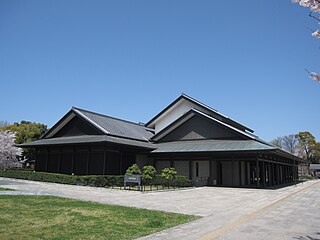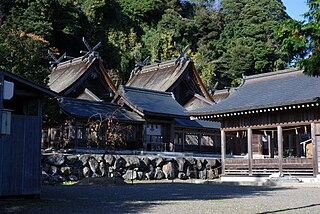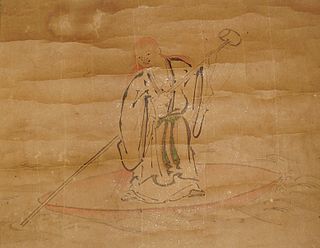 W
WNoh is a major form of classical Japanese dance-drama that has been performed since the 14th century. Developed by Kan'ami and his son Zeami, it is the oldest major theatre art that is still regularly performed today. Although the terms Noh and nōgaku are sometimes used interchangeably, nōgaku encompasses both Noh and kyōgen. Traditionally, a full nōgaku program included several Noh plays with comedic kyōgen plays in between; an abbreviated program of two Noh plays with one kyōgen piece has become common today. Optionally, the ritual performance Okina may be presented in the very beginning of nōgaku presentation.
 W
WEboshi-ori is a Noh play of the 16th century by Miyamasu.
 W
WThe hannya (般若) mask is a mask used in Japanese Noh theater, representing a jealous female demon. It is characterized by two sharp bull-like horns, metallic eyes, and a leering mouth.
 W
WA hayashi (囃子) is a group of performers who provide musical accompaniment for Japanese Nō or kabuki theatre, yose performances of rakugo, or a festival.
 W
WTanroh Ishida is a Japanese actor based in London, UK.
 W
WKurama-tengu is a Noh play from the fifteenth century, concerned with the childhood experiences of the samurai hero Minamoto no Yoshitsune.
 W
WOgisai Kurokawa noh is a noh festival in Kushibiki in Tsuruoka, Yamagata Prefecture, Japan. It became an official Intangible Cultural Asset in 1976.
 W
WKyōgen is a form of traditional Japanese comic theater. It developed alongside Noh, was performed along with Noh as an intermission of sorts between Noh acts on the same stage, and retains close links to Noh in the modern day; therefore, it is sometimes designated Noh-kyōgen. Its contents are nevertheless not at all similar to the formal, symbolic, and solemn Noh theater; kyōgen is a comic form, and its primary goal is to make its audience laugh.
 W
WThe Nagoya Noh Theater (名古屋能楽堂) is a Noh drama theatre building located in the city of Nagoya, central Japan.
 W
WThe National Noh Theatre opened in Sendagaya, Shibuya, Tokyo, Japan in September 1983. The auditorium seats 591 for performances of Noh and Kyōgen, and there is also a rehearsal stage, exhibition area, lecture room, and reference library. In 2007, the National Noh Theatre began to annually present regular programs by female performers.
 W
WThe Noh masks of the Konparu school are a set of 47 noh masks formerly owned by the famous Konparu family of noh actors and playwrights, now part of the collection of the Tokyo National Museum. These masks span five centuries, from the Muromachi to the Edo period, and are designated Important Cultural Properties.
 W
WNomura Mansai II is a well known Kyogen stage actor, and film actor. He played Abe no seimei in Onmyoji and Onmyoji 2, an original work by Baku Yumemakura. He received the Best Actor prize at the Blue Ribbon Awards for his work in Onmyoji.
 W
WSada Jinja (佐太神社) is a Shinto shrine in Matsue, Shimane Prefecture, Japan. The Taisha-zukuri north, central and south halls of 1807 are Important Cultural Properties.
 W
WSaigyōzakura is a Noh play by Zeami about the famous poet Saigyō, regarding his well-known love for cherry blossoms.
 W
WSarugaku was a form of theatre popular in Japan during the 11th to 14th centuries. It originated from sangaku, a form of entertainment reminiscent of the modern-day circus, consisting mostly of acrobatics, juggling, and pantomime, sometimes combined with drum dancing. It came from China to Japan in the 8th century and there mingled with indigenous traditions, particularly the harvest celebrations of dengaku. In the 11th century, the form began to favor comic sketches while other elements faded away. By the late 12th century, the term "sarugaku" had come to include comic dialogues based on word play (toben), improvised comic party dances (ranbu), short plays involving several actors, and musical arrangements based on courtesan traditions. During the 13th century, there was increased standardization of words, gestures, musical arrangements, and program combinations; as well as the adoption of the guild (za) system to which all present-day Noh schools can be traced. Kyōgen also developed from sarugaku. Of particular significance is the development of sarugaku troupes in Yamato around Nara and Kyoto during the Kamakura and early Muromachi periods. In particular, the sarugaku Noh troupe Yuzaki, led by Kan'ami, performed in 1374 before the young shōgun Ashikaga Yoshimitsu. The success of this one performance and the resultant shogunal patronage lifted the artform permanently out of the mists of its plebeian past. From then, the term sarugaku gave way to the current nomenclature, noh.
 W
WA shōjō is a kind of Japanese sea spirit with a red face and hair and a fondness for alcohol. The legend is the subject of a Noh play of the same name. There is a Noh mask for this character, as well as a type of Kabuki stage makeup, that bear the name. The Chinese characters are also a Japanese word for orangutan, and can also be used in Japanese to refer to someone who is particularly fond of alcohol.
 W
WTake no Yuki is a Noh play by Seami.
 W
WTorioi or Torioi-bune is a Noh play of the fourth category, probably from the 16th century, and possibly by Kongō Yagorō.
 W
WUmewaka Minoru I , also Umewaka Rokurō LII (五十二世梅若六郎), was a Noh actor of late Edo and early Meiji period Japan. A prolific teacher of Noh in the Meiji period, he taught a variety of people including the painter Kōgyo, the writer Ezra Pound, and the scholar and art collector Ernest Fenollosa. His diary, published under the title Umewaka Minoru Nikki, spans much of his life, and records in great detail his activities and the world of Noh in the Meiji period.
 W
WYōkyoku (謡曲), also called utai (謡), is a part of the traditional Noh theatre in Japan.